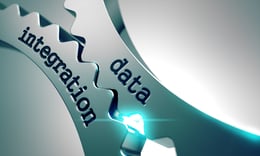5 Steps for Improving Supply Chain Integration
Brian Hoey - April 18, 2019

Supply chain management can often be a stressful task, sure, but so can planning a successful potluck. You often don’t know in advance who’s going to bring what dish to your event, which means that any meal-planning you do on your end is essentially guesswork. Though it’s not likely, you could end up with a party where everyone independently decided to bring potato salad, and no one brought any main dishes or desserts. Luckily, in the 21st century, there’s an app for that: party planners can let attendees specify what they plan to bring in advance, and that information can be displayed in real-time for other attendees who are still deciding. In this way, party planners reduce the likelihood of too many repeat items, while putting themselves in a position to fill in any gaps that may arise.
This might not seem like such a big deal, but modern, digital potluck-planning is actually a powerful metaphor for supply chain integration. Just like your average party planner, supply chain managers increasingly want to gain visibility into what their suppliers (and distributers) are doing—and integration is increasingly the best way to do so. With that in mind, let’s look at some steps that supply chain managers can take to improve their overall supply chain integration.
1. Start by Eliminating Silos at Home
Integration is, at its base, a matter of connecting data from disparate sources and centralizing it all in one place, such that it can be understood, analyzed, and acted upon. Typically, this takes the form of shared technology that connects manufacturers to their suppliers and distributors, but that added upstream and downstream connectivity isn’t going to be worth terribly much if data from within your own organization isn’t integrated as well. Imagine a production planner trying to leverage supplier data into smarter manufacturing flows, only to find that mission critical data about machine usage within her own factory is trapped behind an information silo. This would be frustrating, yes, but also a potential loss of exactly the kind of value that integration is meant to provide. Thus, to really get the most out of your integration it’s crucial to first remember that integration begins at home—manufacturers need to create an open, silo-free IT environment for their own operations before they can pave the way for truly effective integration.
2. Select a Specific Set of Goals and KPIs
Once you’ve got a strong foundation of visibility within your own operation and you've begun to incorporate other data streams into your workflows, the next big question you need to ask yourself is: what specific goal am I trying to accomplish with my supply chain integration? On some level, the answer is always going to be reduced cost and higher profit, but it’s worth digging a little deeper into the specifics in order to create the optimal IT environment for your particular goals. For instance, are you hoping that your newly-integrated workflows will reduce transactional costs? Or maybe the aim is to improve your quality control by getting a better handle on your sourcing? Maybe you’re hoping to cut costs by finding more optimal moments to buy raw materials and ship finished products? Whatever you decide on, choose an appropriate KPI or set of KPIs and track them over time. This way, you’ll be able to get an actual sense of what’s working and what’s not, meaning that you can refine your integration over time.
3. Implement IoT Devices
More data is almost always better. That’s why, once your integration goals have been formalized and you’ve got the various data streams to measure them, it’s time to consider more sophisticated ways of collecting inter-operational information. IoT (internet of things) devices, for instance, can help you to gain better data about your factory floor activities, warehouse operations, and shipping workflows. By creating a more connected logistics chain in this way, you can even develop “digital twins” of your production flows and your supply chain, which would give you the power to monitor activity from all touchpoints on the value chain, digitally, in real time. Not only would this give you the visibility to find and choose the optimal transport management options (as just one example) based on your emerging needs, it would also empower you to run simulations and tests on your supply chain to determine whether or not there are any process improvements that could be implemented in order to add value and improve your ROI. In this way, IoT integration can be seen as an extension of supply chain integration more broadly.
4. Consider Automation
Now, one of the most valuable aspects of IoT integration is the automation of data collection. Since these devices are built with the kind of functionality we described above in mind, they’re already optimized to send data to the appropriate location without any additional human intervention. The way this adds value should be pretty obvious: supply chain managers no longer have to spend time on the repetitive, time consuming tasks that go along with manual data collection, freeing their time for more important tasks and thus improving operations. Though some elements of your IT infrastructure will be more resistant to the removal of human intervention, any way you can partially or fully automate the collection of data will make a big difference to your bottom line.
5. Utilize Advanced Analytics
Remember how we said above that more data is always better? Well, one of the reasons that's true is the wider adoption of advanced data analytics across supply chain management in the past several years. Even within your own production chain, operational data can be leveraged into improved predictive and prescriptive insights with the use of advanced analytics; this can be a crucial value-added proposition for supply chains that struggle with matching their production to real demand levels, or those who simply operate at such a high level of complexity that optimization is daunting for human planners. If this is all possible with data that’s native to your organization, think of all the ways that you can optimize your supply chain once you introduce supplier and distributor data into the (literal) equation. Transport logistics, sourcing, demand-capacity planning: in integrated environments, all of them stand to benefit from the adoption of advanced analytics workflows.
If you want to learn more get your Guide to Industry 4.0:
LATEST POSTS
- Understand Circular Economy in The Manufacturing Industry
- How Can Industry 4.0 IT Integration Be Achieved Smoothly?
- The Significance of Order Sequencing in Discrete Manufacturing
- How to improve your Supply Chain Management: The Power of Control Towers
- Optimizing Human Resource Scheduling in Manufacturing: A Technological Approach



